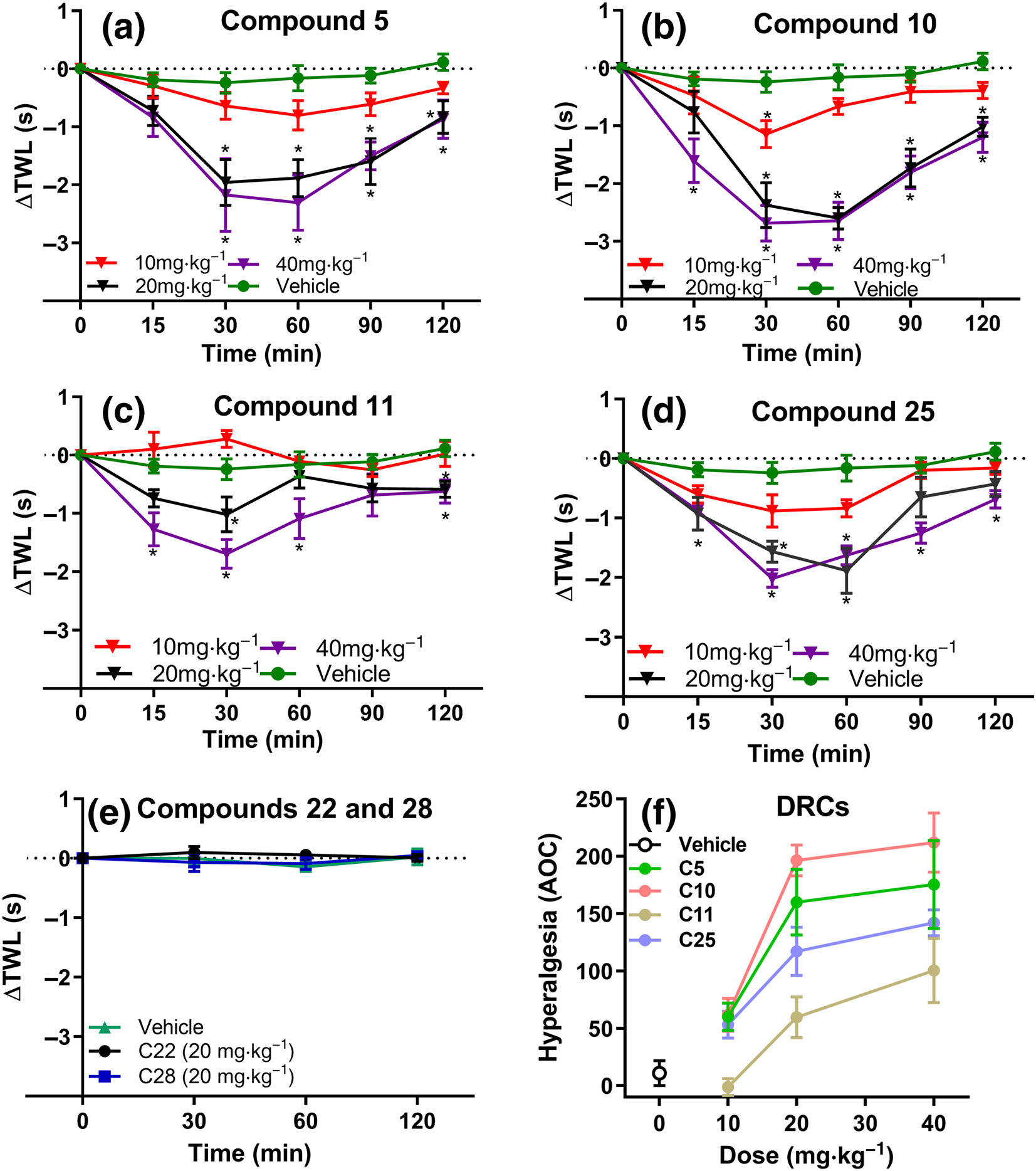FIGURE 5.

Temporal changes in the mean ± SEM ΔTWL values assessed using the tail-withdrawal assay (47°C). Subcutaneous administration of compound (a) 5 (n = 7, 8 and 7 respectively for 10, 20 and 40 mgkg−1) (b) 10 (n = 7, 8 and 7, respectively for 10, 20 and 40 mgkg−1) (c) 11 (n = 7, 10 and 7, respectively for 10, 20 and 40 mgkg−1) and (d) 25 (n = 7, 10 and 7, respectively for 10, 20 and 40 mgkg−1) but not vehicle (n = 10), produced significant dose-dependent temporal changes in the thermal hyperalgesia of naïve adult C57BL/6 mice. In contrast, administration of compounds (e) 22 and 28 (n = 7 per compound) did not elicit any temporal changes in the ΔTWL values, relative to vehicle (n = 4). (f) Dose response curves (DRCs) for each of the compounds tested in the tail-withdrawal nociceptive assay. Data presented as mean ± SEM. *P < 0.05, significantly different from vehicle (20% PEG); two-way ANOVA, with post hoc Bonferroni test
